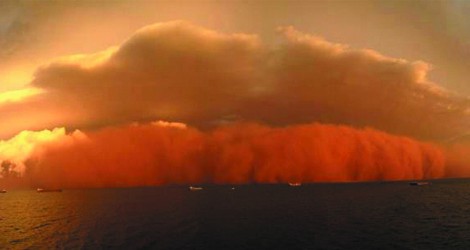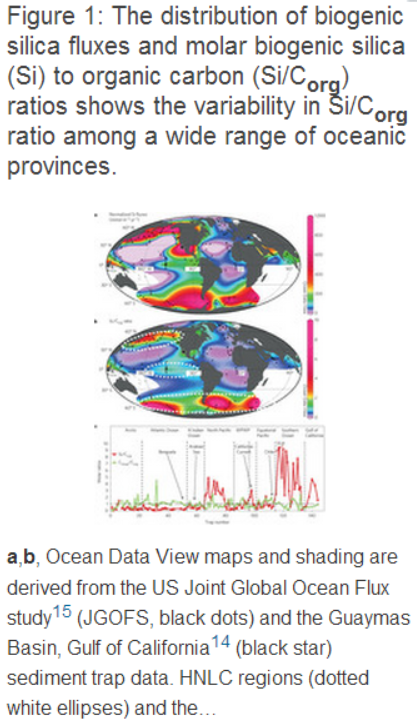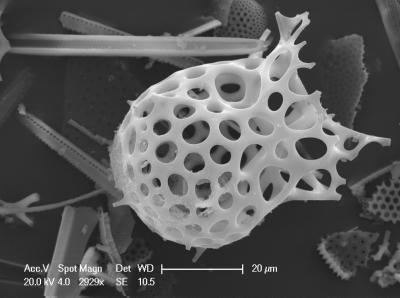
Declining Dust In The Wind Slows Ocean Plankton Growth Increasing CO2 In Air
High CO2 results in declining dust in the wind, in ancient times less dust meant less iron reached oceans to sustain plant life.
A new study from the University of Edinburgh published in Nature Geoscience ( Silica burial enhanced by iron limitation in oceanic upwelling margins – June 2014) confirms that ocean feedback due to ocean pasture collapse is contributing to climate change through vast amounts of CO2. With growing impacts of anthropogenic CO2 the world’s oceans are starting to release more carbon dioxide (CO2) into the atmosphere, fueling climate change even further.
The study, published in Nature Geoscience, provides insight into how the ocean is playing a major part in our changing climate.
 Based on a 26,000-year-old sediment core taken from the Gulf of California, researchers believe the ocean’s ability to take up atmospheric CO2 has changed over time.
Based on a 26,000-year-old sediment core taken from the Gulf of California, researchers believe the ocean’s ability to take up atmospheric CO2 has changed over time.
The team, from the University of Edinburgh, measured the abundance of key elements – silicon and iron – in the fossils of tiny marine organisms, known as plankton, in the sediment core.
Phytoplankton are the world’s most vital life form because they absorb CO2 from the atmosphere at the ocean surface, and re-position vast quantities of that carbon into the deep ocean.
According to researchers periods when silicon was least abundant corresponded with relatively warm climates, low levels of atmospheric iron, and reduced CO2 uptake by the oceans’ plankton.
Scientists have long known that iron plays a vital role in plankton’s ability to absorb CO2 – and this latest study shows that a lack of iron at the ocean surface affects other factors such as siliceous diatom production that contribute to plankton’s carbon uptake.
“Iron is known to be a key nutrient for plankton, but we were surprised by the many ways in which iron affects the CO2 given off by the oceans,” lead study author Dr. Laetitia Pichevin said in a University of Edinburgh news release.
“If warming climates lower iron levels at the sea surface, as occurred in the past, this is bad news for the environment.” Unless of course something might be done to replenish the missing iron so critical to ocean plant life.
The Southern Ocean and equatorial Pacific and coastal areas, which are known to play a crucial role in influencing levels of CO2 in the global atmosphere, studied by this group were especially affected by this phenomenon. Those ocean regions are far from sources of wind-blown dust, a major source of ocean silica and iron.
Researchers from the University of Edinburgh say their findings pinpoint the complex link between iron and other key marine elements involved in regulating atmospheric CO2 by the oceans.
Their findings were verified with a global calculation for all oceans.
The study, published in Nature Geoscience, was supported by Scottish Alliance for Geoscience Environment Society and the Natural Environment Research Council.
Read more about how ocean pastures rely on dust in the wind to thrive in this blogs post on the Yin and Yang of Pastures
And the Journal Science not to be outdone by the Journal Nature has another great paper on the role of dust and ocean plankton productivity here.









